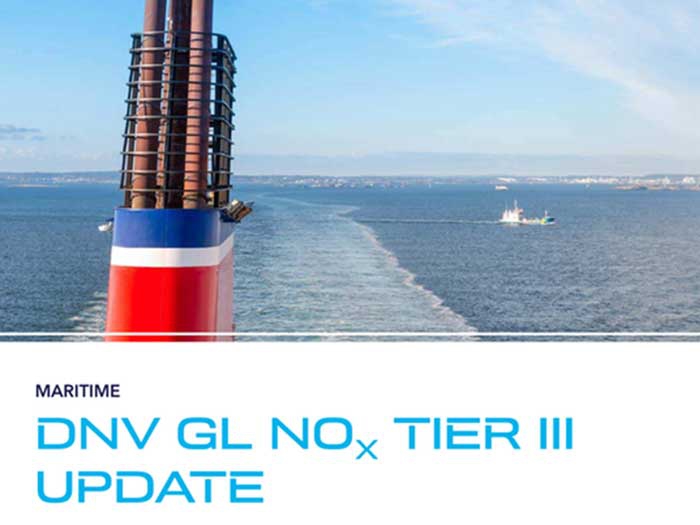
DNV GL issues new guidance on NOx Tier III requirements
Written by Nick Blenkey
JULY 21, 2017 — Classification society DNV GL has released a new brochure that offers a set of best practices for the design of ships subject to NOx Tier III requirements. It also offers guidance on the considerations that should be taken into account at the newbuilding stage.
To ensure the success of any shipbuilding newbuilding plan, says DNV GL, shipowners should carefully consider the future operation of their vessels in the newbuilding planning stage, including the implications of the different technological solutions for reducing NOx emissions and how to fulfill the NOx Tier III requirements.
To fulfill the stricter NOx Tier III emission limits, ship operators have the possibility of choosing from various options. The optimal compliance option will depend upon many factors, including a vessel’s individual trading pattern, engine size and speed. The brochure examines selective catalytic reduction (SCR), exhaust gas recirculation (EGR), the use of alternative fuels, internal engine modifications, direct water injection (DWI), fuel-water emulsion (FWE) and intake air humidification.
Installing NOx Tier III-compliant technology can offer benefits beyond simply achieving compliance with emissions regulations, says DNV GL. Demonstrating a company’s commitment to ensuring sustainable operations has become increasingly important. In addition, the installation of Tier III-compliant technology also goes hand in hand with direct financial benefits, as many major ports offer substantial discounts on harbor fees if a vessel complies with third party environmental schemes such as the ESI.
Read the guidance HERE





Leave a Reply
You must be logged in to post a comment.